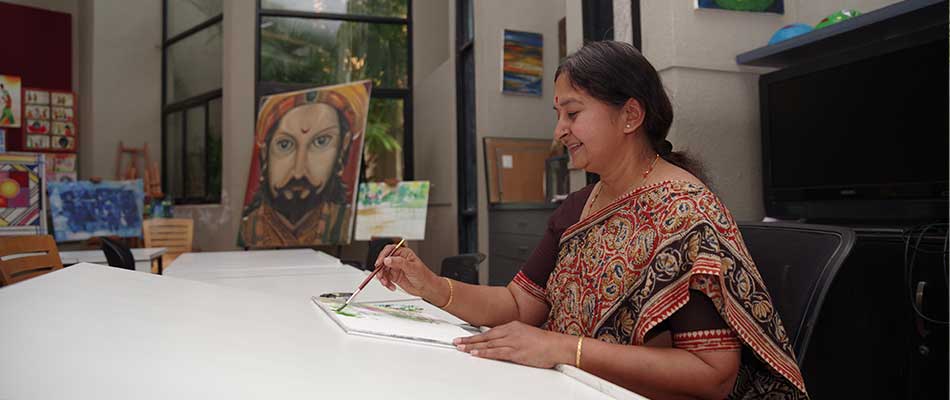Teaching Visual Art to students in a Liberal Education University at an under-graduate and post-graduate level has been exciting as well as challenging. Exciting as all of us faculty are passionate about our subjects. And, challenging because almost all students are on square zero. The last time they held a pencil to draw something was probably the amoeba and spirogyra diagrams in their tenth standard Biology paper.
So these are some findings I have reached, based on the first assignment in my Visual Art class.
The course begins with a simple exercise of giving an A4 size paper and pencils to students. The paper has six blank squares of 3 inches each. Students are supposed to create compositions using a square, circle and a triangle within five minutes. (A composition is the relationship of one element to the other in a given space.) This exercise is to prove a point regarding Lateral Thinking and the possibilities that any art form offers.
I have been conducting this exercise for the past eleven years, and have gathered fifty samples from the previous courses of Visual Art to illustrate my point. To my surprise the observations are the same.
- Barely 10 per cent of students are able to complete all six squares in five minutes.
- The circles, squares and triangle drawn are almost of the same size and rarely overlap.
- Not a single student in eleven years has completed all squares and is eager to create more options.
- All compositions are inside the square box. None are outside or connecting the squares, whereas, when asked ‘What is Creativity?’ someone always answers, ‘Thinking out of the box’!
- There is absolutely no variation in the tonal value of the pencil.
These observations, to me, are an indication of the effect the linear education system has on students by the time they are eighteen. Five minutes are enough to convince the class in this regard. Firstly, any art is a space for infinite possibilities. In a class of twenty-five students, we get hundred and fifty options of compositions. Yet, there is an inability to visualize and come up with options quickly. Even though this is not an assignment which is graded, students have an immense apprehension towards expressing themselves visually.
Further on, to illustrate this point, we move on to the use of colour- crayons, colour pencils, poster colours, water colours, even acrylic colours in another course. Students are found to be engaging with a single colour in large spaces. There are continuous demonstrations of the use of tints and shades to add to the visual impact of paintings. Now, there is nothing wrong in the use of a single colour and eventually it is a painting. But, this again to me is an indication of a one-track mind or inability to engage with multiplicity or possibilities.
We always hear about brilliant ideas, such as integrating Creative Thinking in academics, or how the future of education lies in innovations and creative endeavours, etc. A creative activity entails possibilities, improvisations. But how does one go about it? Does a thirty-session course do enough justice to generate awareness among students and therefore initiate steps in this direction? These are questions I have been pondering upon all through my teaching career.
Part of the answer, to me, is to consciously integrate some form of art (visual or performing art) throughout the academic journey. Theoretical courses and structures need to be integrated and balanced with courses which sensitise students and render flight to their imaginations.
But even beyond this, given that we have at least seven kinds of intelligences (as Dr. Howard Gardner has indicated), such as bodily-kinesthetic, musical, artistic, which are rarely used, (while linguistic and mathematical intelligences dominate), therefore our education system needs a radical overhaul. Only then will the promise of ‘out of the box’ thinking truly become more than a catch-phrase!
- Prof. Suniti Vadalkar - Chair, Fine and Performing Arts


